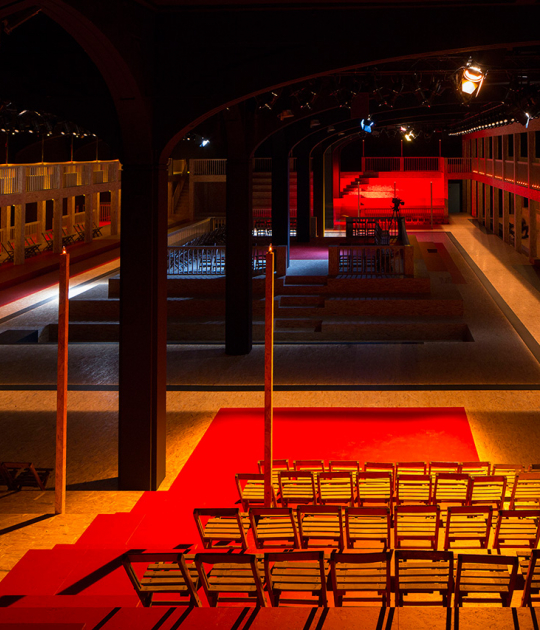GOLDEN EYE
By awarding the Golden Eye to Voltage, the tenmember jury, chaired by Frits van Hout (Executive Vice President ASML), expresses its great appreciation for designer Iris van Herpen’s innovative interpretation of the concept of fashion. The jury shows itself impressed by the designer’s interdisciplinary approach and praises her cooperative efforts. "With Voltage, Van Herpen gives the world a view into the future of fashion. It is impressive to see how she, at such a young age, succeeds in giving so much body to her work, without any loss of experiment and challenge. With her designs she shows better than anybody else what is going on in the Netherlands at the moment."
MORE WINNERS
This year, the MINI Young Designer Award, the incentive award for young talent, goes to Femke Herregraven. The jury characterises the designer, who applies graphic design in a journalistic way to question the society and the power structures therein, as a ‘subtle and intelligent social activist who is not afraid of complexity and proceeds in a thorough and restrained manner’. Winners in other categories are Museum de Fundatie - Bierman Henket architecten (spatial exterior), Toren van Uitwierde - Onix (spatial interior), Do Not Touch - Studio Moniker (communication motion), Rijksmuseum Website - Fabrique (communication digital), Chanel No.5 - Irma Boom (communication graphic), Blockerwheelchair braking system – Life and Mobility Development (product professional), Designline HDTV – Philips/TP Vision (product consumer), and Het Verzameld Breiwerk van Loes Veenstra uit de 2de Carnissestraat - Christien Meindertsma (product autonomous design). De Future Concepts Award went to The Incredible Shrinking Man by Arne Hendriks, due to the bold statement and new perspective that he offers. Heijmans took home the Best Client Award. Textile and interior designer Ulf Moritz was awarded the BNO Piet Zwart Award by the Association of Dutch Designers (BNO) and Dutch Design Awards.
DUTCH DESIGN AWARDS
Dutch Design Awards (DDA) are internationally renowned prizes awarded to the very best in the field of Dutch Design. Together, the award ceremony, the exhibition during Dutch Design Week featuring the work of all finalists, and the publication of the ‘Dutch Design Yearbook’ in collaboration with nai010 Publishers, form a platform for Dutch design across its full width. DDA is produced by Capital D.
Appendix: DDA winners 2013/Apéndice: ganadores del DDA 2013
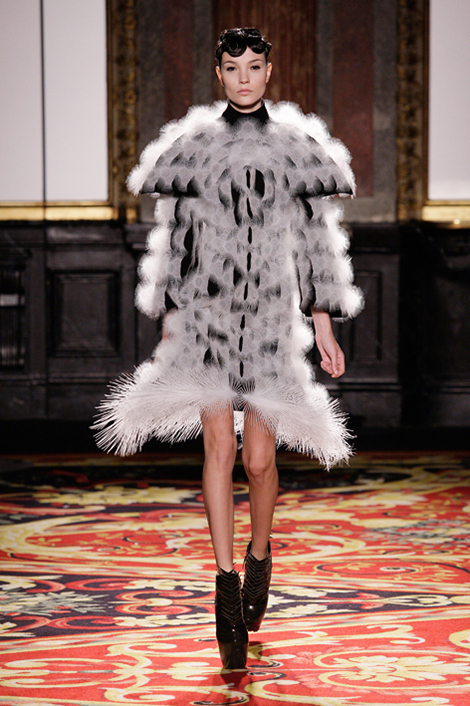
GOLDEN EYE. Iris van Herpen – Voltage. Photography © M Zoeter x Iris van Herpen.
GOLDEN EYE
Iris van Herpen – Voltage
By awarding the Golden Eye to Voltage, the ten-member jury, chaired by Frits van Hout (Executive Vice President ASML), expresses its great appreciation for designer Iris van Herpen’s innovative interpretation of the concept of fashion. The jury shows itself impressed by the designer’s interdisciplinary approach and praises her cooperative efforts.

SPATIAL. Exterior: Bierman Henket architecten – Museum de Fundatie. Photography © Joep Jacobs.
SPATIAL
Exterior: Bierman Henket architecten – Museum de Fundatie.
The new building volume on top of Museum de Fundatie has a bluish-white skin in which a large glass window is located, facing the inner city. The skin is made up of 55,000 ceramic tiles by Royal Tichelaar Makkum. The jury saw the history of Makkum reflected in the design, in a way that repositions the building without dominating it. The apparent contradiction between classic and futuristic is balanced and gives the building an impressive appearance.
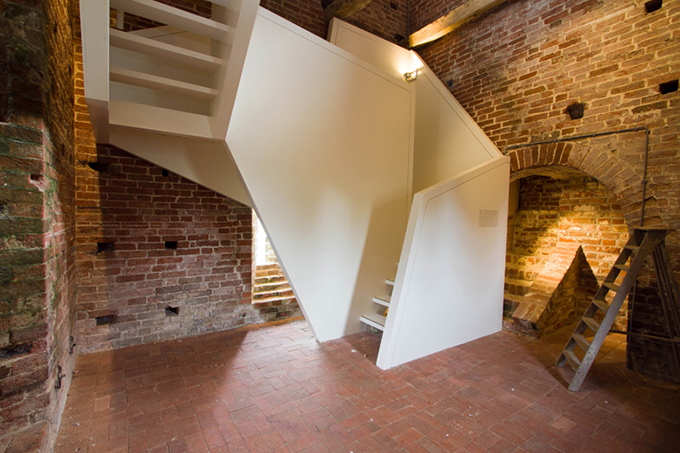
SPATIAL. Interior: Onix – Toren van Uitwierde.
SPATIAL
Interior: Onix – Toren van Uitwierde.
Onix designed a voluminous staircase along which the thirteenth-century church tower in Uitwierde can be climbed. Original features and the modern staircase collide in a playful manner. The jury sees the rotating staircase as an invitation to interaction and climbing. The subtle friction between old and new also elicits a different view of the historic building. The promised view is just an inducement to go to the top: the journey itself is the highlight.
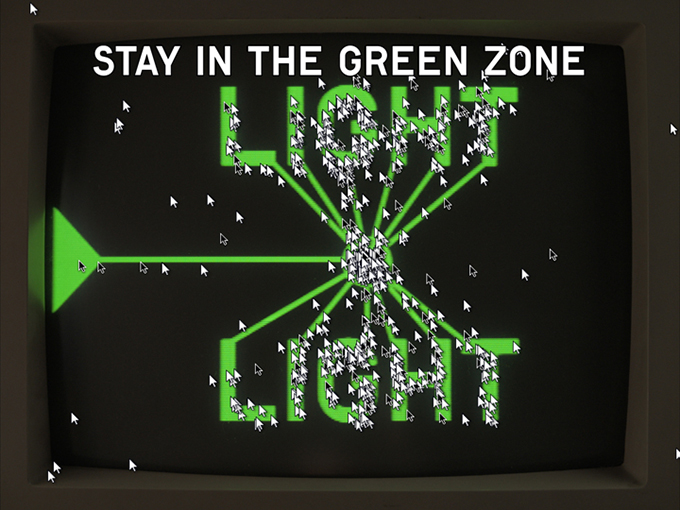
COMMUNICATION. Motion: Studio Moniker – Do Not Touch.
COMMUNICATION
Motion: Studio Moniker – Do Not Touch.
In the video clip of the song ‘Kilo’ by Light Light, which was realised through crowd sourcing, the viewer sees a growing number of cursors flitting across the screen. Each time someone follows the instructions on donottouch.org on the screen, the movements of the cursor are recorded. According to the jury, in this video clip, which is made in an innovative way, everything is just right. The possibilities of technology and social behaviour are combined in a surprising way, and the audience is intrinsically involved in the creative process. A distinctive concept, carried out with a modest budget.

COMMUNICATION. Digital: Fabrique – Rijksmuseum website.
COMMUNICATION
Digital: Fabrique – Rijksmuseum website.
The new website for the Rijksmuseum presents an overview of the entire collection. In the design, the ‘tablet first’ principle is used, with inch-thick buttons and wide navigation bars. This makes the site exceptionally suitable for users of smartphone and tablet. The jury is unanimously full of praise for the website of Rijksmuseum and sees it as a new standard. The site is well organised, user-friendly, inviting the spectator from the very first moment to play with the collection. A welcome addition for those who have already visited the museum, and an opportunity to watch everything one more time from behind your computer. The website as a second museum.
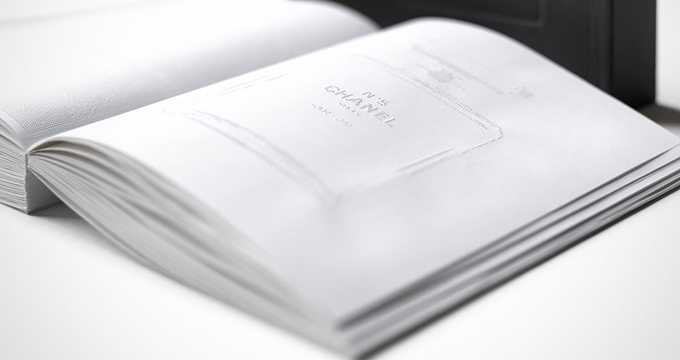
COMMUNICATION. Graphic Design: Irma Boom – Chanel Nº5.
COMMUNICATION
Graphic: Irma Boom – Chanel Nº5.
To match the classic Chanel perfume, Irma Boom created a book without ink, with 500 pages in blind embossing. Just as with the perfume, the most important element is invisible and yet present. The jury is of the opinion that Boom has managed to capture a sense (smell) and make it tangible through other senses: sight, touch. This elevates the book to an object and an experience. A total experience that represents the sensuality of smell and is functional at the same time: you can still read everything. An interactive experience in a classic product.
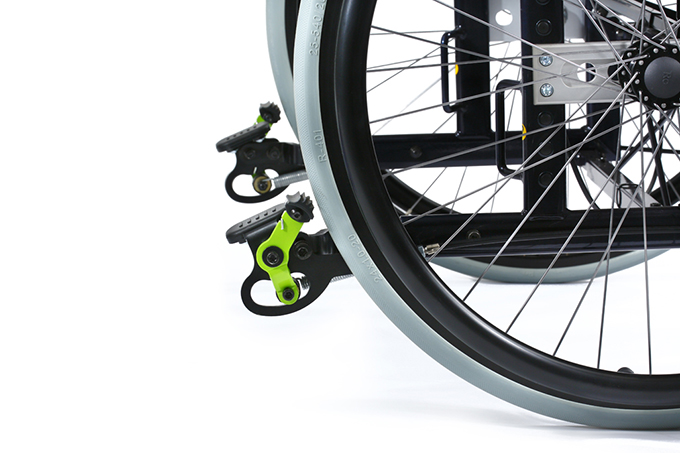
PRODUCT. Professional: Life and Mobility Development - Blocker-wheelchair braking system. Photography © Toon Hendriks.
PRODUCT
Professional: Life and Mobility Development - Blocker-wheelchair braking system.
The Blocker-braking system ensures that the brake of a wheelchair automatically becomes operational as soon as the occupant gets up to leave the wheelchair. With this application, accidents and calamities (1 million wheelchair-related falls annually) are prevented by means of a simple addition. The jury sees in the Blocker-braking system industrial design at its best: an excellent and above all reliable solution to a problem. User-friendly, accessible, useful and functional. A strong plus is the fact that the application can be easily added to an existing product. Thus, it takes account of the often limited budget of wheelchair users.
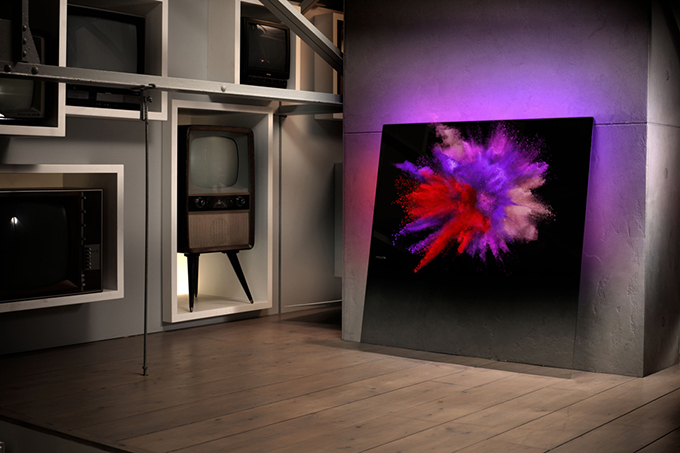
PRODUCT. Consumer: Philips/TP Vision – DesignLine HDTV. Photography © Royal Philips TP Vision.
PRODUCT
Consumer: Philips/TP Vision – DesignLine HDTV.
The Design Line 2013 is a 3D Smart TV with a 1400 Hz Full HD resolution. Without cabinet housing, leg or even frame, the TV seems no more than an immense glass pane that goes from black to transparent. In the Design Line, the jury has caught a glimpse of the future. The progressive and groundbreaking design, made with boldness, merges different things in one. Thus the role of television is redefined: both physically (the increasingly hidden device elevated to an art object that is allowed to be a striking element in the interior) and in terms of application. A futuristic design that makes the jury curious about the next step.

Iris van Herpen – Voltage. Photography © M Zoeter x Iris van Herpen.
PRODUCT
Fashion: Iris van Herpen – Voltage.
‘Voltage’ is Iris van Herpen’s fourth haute couture collection in which she explores the electricity of the body, in other words, the strength and movement of the body.
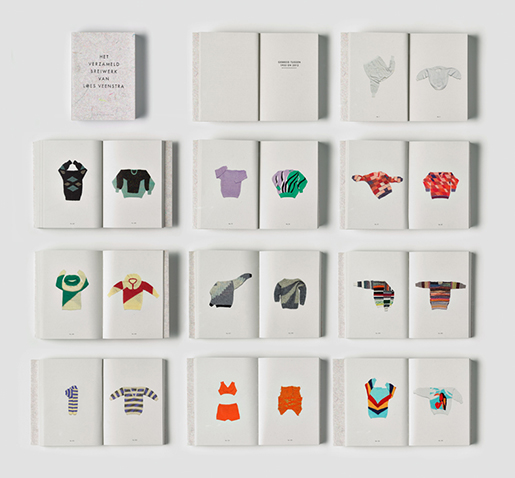
PRODUCT. Autonomous design: Christien Meindertsma – Het verzameld breiwerk van Loes Veenstra uit de Tweede Carnissestraat (The collected knitting of Loes Veenstra from the Tweede Carnissestraat). Photography © Mathijs Labadie.
PRODUCT
Autonomous design: Christien Meindertsma – Het verzameld breiwerk van Loes Veenstra uit de Tweede Carnissestraat (The collected knitting of Loes Veenstra from the Tweede Carnissestraat).
Loes Veenstra from Rotterdam has since 1955 been knitting five hundred jumpers. Museum Rotterdam discovered this collection of never-worn garments, and Christien Meinderstma dedicated a book to them. She also organised a cheerful flash mob with them in the neighbourhood in which Loes Veenstra lives. According to the jury, Meindertsma brings with this project a tribute to ‘ordinary people’. A sympathetic and at the same time beautiful way of presenting the museum’s collection. Thanks to the rehearsed flash mob with residents, design makes sure that people come together and calls forth a positive effect on the quality of life. A small but special story is thus revealed in a creative and innovative manner.
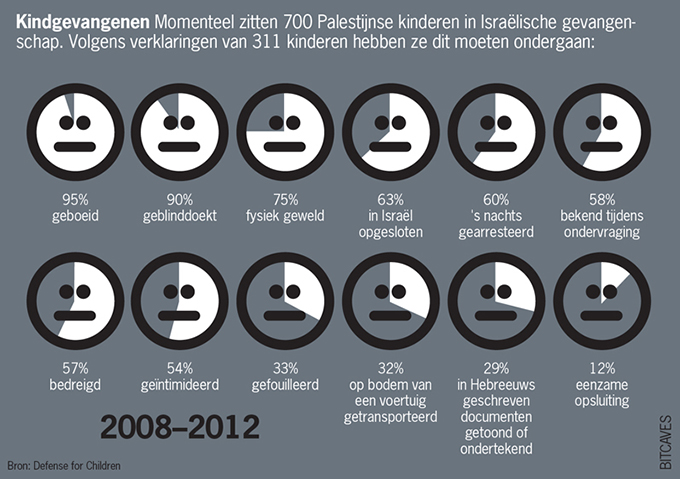
MINI YOUNG DESIGNER AWARD: Femke Herregraven.
MINI YOUNG DESIGNER AWARD: Femke Herregraven.
With the presentation of the Mini Young Designer Award to Femke Herregraven, the jury rewards the designer’s subtle and intelligent activism. Herregraven uses graphic design in a journalistic way to explore and question society and the power structures therein. She works in a thorough and restrained manner, which increases the effectiveness. Her designs have been worked out carefully: a successful combination of presentation and content.
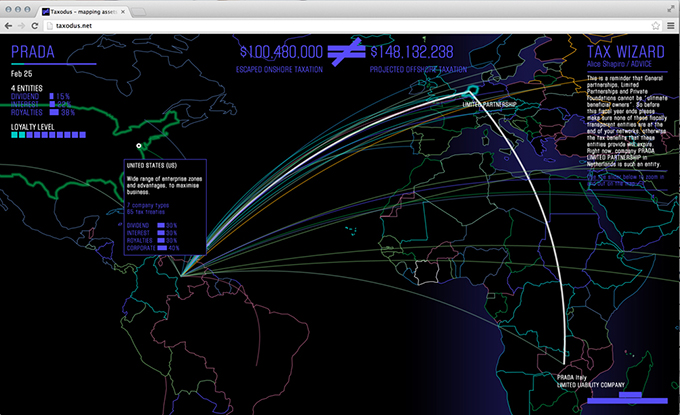
MINI YOUNG DESIGNER AWARD: Femke Herregraven.
FUTURE CONCEPTS AWARD Arne Hendriks - Incredible Shrinking Man.
Arne Hendriks shows what thinking from a radically different perspective can produce. The Incredible Shrinking Man can be read as a manifesto that raises questions about societal issues at a global level. Through boundless out-of-the-box thinking, he questions the tendency to make everything bigger and introduces man as the modifiable factor rather than his surroundings. Hendriks thus makes a bold statement in which the world is not improved by growth but by shrinkage. The Incredible Shrinking Man is a positive research experiment that appeals directly to the imagination.

BEST CLIENT AWARD: Heijmans. Photography © Reinout van den Bergh.
BEST CLIENT AWARD: Heijmans.
The jury report underlines the fact that Heijmans involves various bureaus and design disciplines at an early stage in the tendering procedure. This company shows a clear vision of the future and succeeds in using it to innovate and create new opportunities. Thanks to the cooperation with Dutch designers, Heijmans encourages its own creative industry, meeting the demands and requirements of the area of specialisation. Especially in the construction sector, this refreshing approach deserves more attention.
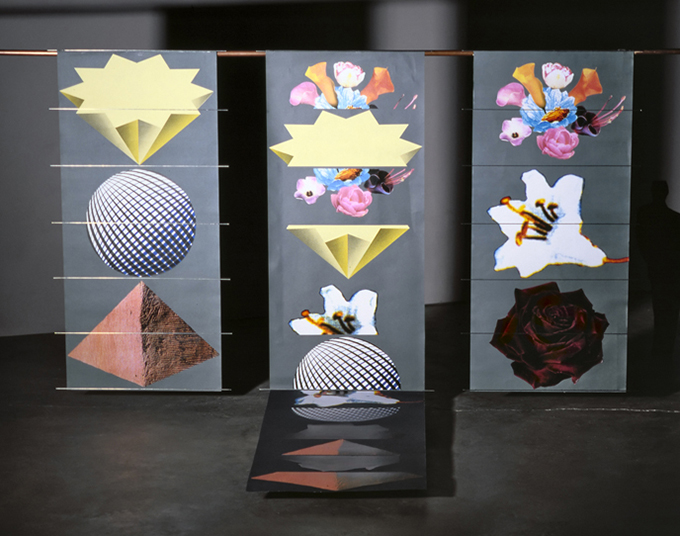
BNO Piet Zwart Ulf Moritz 02-Past Present Future Ploeg Fabrics 1989. Photography © prototype.
BNO PIET ZWART AWARD: Ulf Moritz.
Cosmopolitan Ulf Moritz collects his ideas from all over the world and translates them into convincing collections in which elegant aesthetics are balanced with commercial goals. His designs show a recognizable signature, consisting of a diversity of style elements in combination with surprising materials and innovative techniques.




















